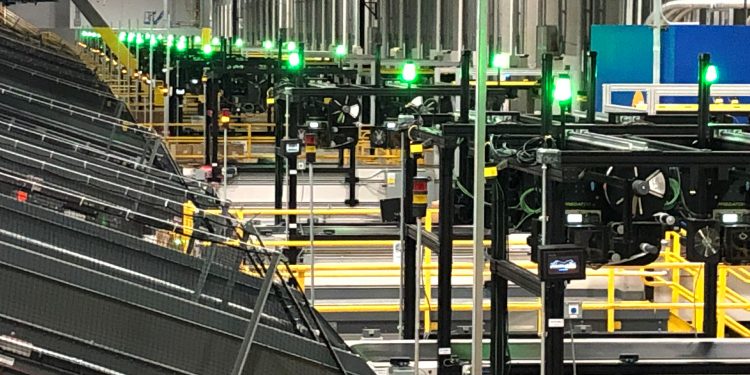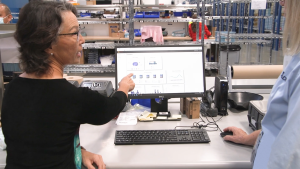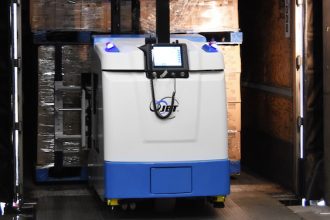Intralogistics: Warehouse Digitalization of Receiving

Warehouse digitalization is not something off in the future. In fact, it is rapidly becoming a necessity for any business wanting to compete in the here and now. E-commerce explosion, SKU proliferation and the demand from customers for products delivered quickly and accurately have driven the need for warehouse digitization.
Benefits of Warehouse Digitalization
The biggest advantages of a high-tech, digitized warehouse are that you increase the speed and accuracy of tasks, as well as achieve process traceability. That plays out with the ability to track process from production, storage-retrieval and distribution phases, all the way to the end customer. This capability provides safety compliance, when necessary, quality assurance and a method for identifying the location of products anywhere in the supply chain.
Start Your Warehouse Digitalization Journey

How and where you begin to roll out warehouse digitalization, however, is highly individualized. It can range from the very simple and inexpensive, on up to a full-blown warehouse management system (WMS) that feeds information to the entire supply chain.
One of the first, most common spots to begin warehouse digitization is receiving because it’s one of the least complicated operations in your facility. It’s the first touch point and a good place to establish a digital footprint for the remainder of your processes.
Digitized Receiving
In a traditional, manual operation, workers would receive products on the dock and compare them against a paper manifest, which leaves plenty of room for human error and lack of any traceability. With a digitized receiving area, incoming pallets will feature scannable labels. Workers might use handheld devices to make the scans, but often a fixed scanner will read the information from the label. Typically, that will include identifying information about the SKU — name, color, size, etc. — and compare it against expected receipt. As the goods make their way into the facility, the WMS receives all the information from the scan and creates a digital map. The “nameplate” will follow that item throughout the warehouse and, eventually, out the door.
For the most part, warehouses set up digitized receiving operations to include conveyors on the docks that move products directly into the facility. They include fixed scanners reading the labels as they pass through. In other cases, the product might enter the facility using a forklift, small robot or AGV — again using scanners to read the products as they arrive.
The scanning or capturing equipment available for receiving varies widely and often comes down to budget or complexity of operations. But receiving might include a barcode inline scanner, an offline scanner or a highspeed camera that captures the label and uploads it to the WMS. In total this could be an automated or semi-automated operation.
ROI on Warehouse Digitalization of Receiving
The investment in technology to accomplish digitized receiving doesn’t have to be high, and it delivers a return on investment (ROI) fairly quickly. Beyond the ROI, however, your facility will gain efficiencies and traceability that take operations to the next level.
Related Content: Digitization of Intralogistics
To Learn More About MHI’s Solutions Community: https://www.mhi.org/solutions-community



